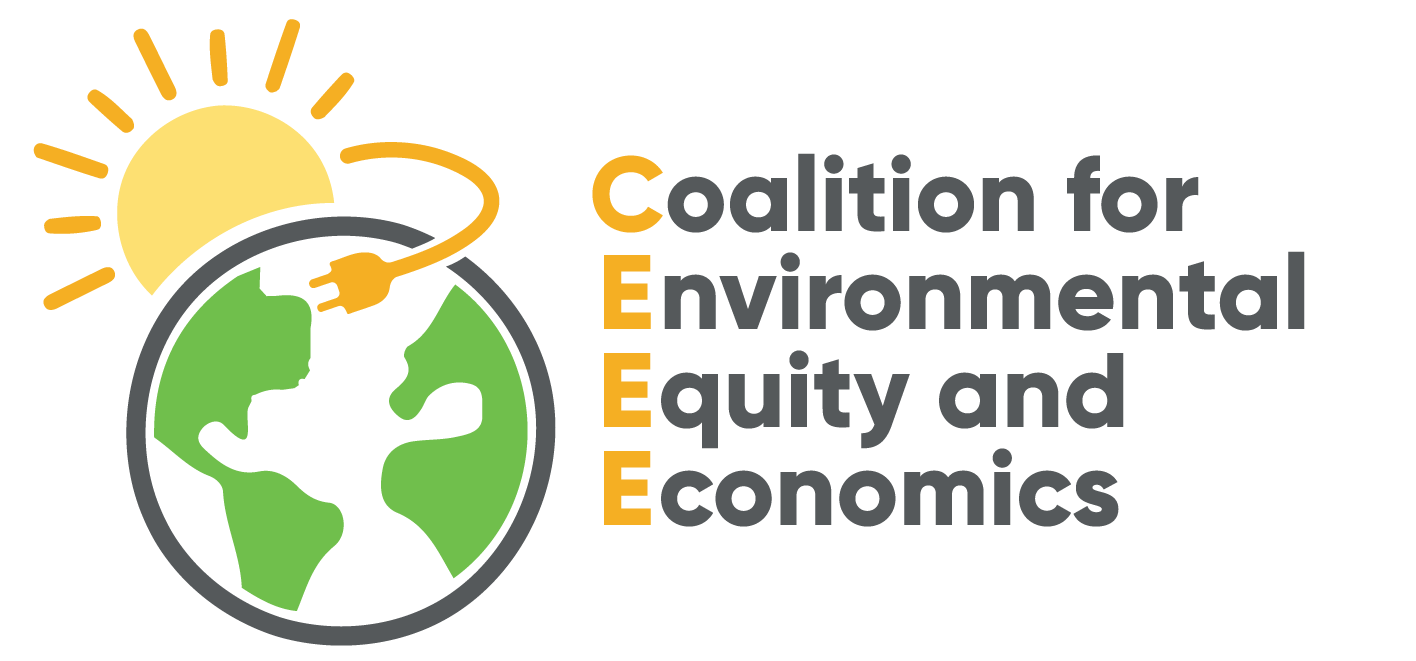
CEEE Analysis of Proposed NEM 3.0 Decision
Learn the facts about the CPUC’s horrific NEM 3.0 Preliminary Decision
Advocates for Environmental and Economic Justice
The Coalition for Environmental Equity and Economics (CEEE) is an alliance of grassroots environmental justice, immigrant rights, and faith-based organizations.
CEEE advocates for environmental justice, which means the promotion of public policies that advance green technologies and practices that benefit public health outcomes for California’s communities most affected by industrial pollution.
CEEE also advocates for economic justice. Specifically related to energy, we envision a substantive transformation of the current centralized electrical grid to a decentralized system resulting in clean energy and modernization of the grid. That change will offer Environmental and Social Justice (ESJ) communities and working families’ real opportunities to lower their monthly electrical bills and to provide resiliency in the face of the destructive effects of climate change.
On December 13, 2021, the California Public Utilities Commission (CPUC) proposed a reworking of the tariff that currently incentivizes the implementation of on-site solar called Net Energy Metering. Our analysis suggests that the NEM-3 PD was is significantly harmful to the growth of on-site solar generally and, despite CPUC rhetoric, is generally unfavorable for ESJ and working communities.
Slows On-Site Solar Growth for ESJ Communities
On-Site Solar becomes more expensive, not less, for ESJ communities and low-income ratepayers under the proposed rule changes. Instead of seeing a rapid growth among low-income customers and ESJ communities, helping to create a more equitable uptake of onsite-solar among all California consumers, reducing air pollution and driving economic opportunity and jobs in ESJ communities, the state would expect to see a sharp decline in onsite-solar adoption and a return to a time when onsite-solar was only affordable only for the wealthy.
Today, under current rules, the benefit of going solar comes from the dual value of generating your own energy from the sun, which avoids rising energy costs, and letting you share your extra solar energy with the neighbors for a bill credit that helps cover energy purchased from the grid at night. The proposed rules would slash those bill credits by 70-% to 80% from what they are today, clawing back significant savings from the consumer.
The proposed decision attempts to soften the blow by recommending a “Market Transition Credit” of $26 per month for eligible PG&E customers and $31 per month for eligible Southern California Edison customers. No incentives are proposed for customers of San Diego Gas & Electric. The incentive payments go away after 10 years and only customers who sign up to go solar within the next four years would get it at all. be eligible. The Market Transition Credit falls far short of the NEM 3.0 proposal submitted to the CPUC by Grid Alternatives, Vote Solar, and the Sierra Club and far, far short of the proposed NEM 3.0 reforms offered by CEEE in our Statement on Solar Equity.
The Market Transition Credit plan is anything BUT equity
As the charts below show, the bottom line is, the proposed Market Transition Credit incentive is not enough to offset the gutting of the bill credit, so solar becomes more expensive, not less, for low-income consumers and those living in the state’s most polluted neighborhoods. For example, a low-income family living in PG&E territory and on CARE rates would currently pay approximately $46 per month after going solar under today’s NEM rules. Under the proposed NEM-3 rules, this same family would see a $24-50 per month increase of $24 to $50 in their monthly electric bill. Obviously, if solar becomes more expensive for everyone, California will see a decline in on-site solar [MC1] adoption. This decline of on-site roof adoption will kill jobs, and the cost of solar will consequently go up.
Cookie Crumbs for Frontline Communities
The NEM-3 Proposed Decision does propose a new fund of up to $150 million per year, for four years, to further incentivize solar for low-income customers and ESJ communities–the details of which are to be worked out later. However, to make up for the losses described above, the state would have to spend $10,000 per home, funding around 15,000 low-income solar homes per year. How does that compare to today’s on-site solar adoption? The Lawrence Berkeley National Laboratory reports that 19,000 California families earning less than $50,000 per year adopted on-site solar in 2019. Another 45,000 families earning between $50,000 and $100,000 per year in household income also went on-site solar in 2019. The CPUC’s language lacks specifics (we know what that usually means) and even if the $150 million in additional incentives funded 30,000 low-income families, California would still see a decline in on-site solar adoption among low-income and working-class families.
No Consumer Education or Protection
Additionally, Market Transition Credit incentive has no language that enhances funding for consumer education and protection. Without functional and well-funded consumer outreach the enrollment into the program will not be substantial enough to improve inequity.
The Plan Decimates CA’s Best Tool to Combat Systemic Environmental Inequity & Green Job Growth
Also, it is important to note that ESJ communities are the first to suffer the consequences of California’s continued dependence on fossil fuels in the form of air and water pollution and high asthma rates. These public health impacts are the real cost of California policy that slows the adoption of on-site solar energy statewide. Shutting down dirty power plants and phasing out diesel and gas-powered vehicles can only happen if California accelerates the adoption of on-site solar and energy storage everywhere. The proposed decision hurts the mainstream market as well as the market in low-income and ESJ communities.
Last, but not least, ESJ communities will suffer job losses due to the shutdown of California’s on-site solar market. Small solar businesses, which are more likely to be owned by women and minorities and employ people from the local community, will go out of business and opportunities for economic development in rural and ESJ communities will dry up.
We hope that this factual analysis of the proposed NEM-3 decision will help you in advocating over the next several weeks for progressive changes to the decision. We will be providing updates on planned actions against the proposed NEM-3 decision.


